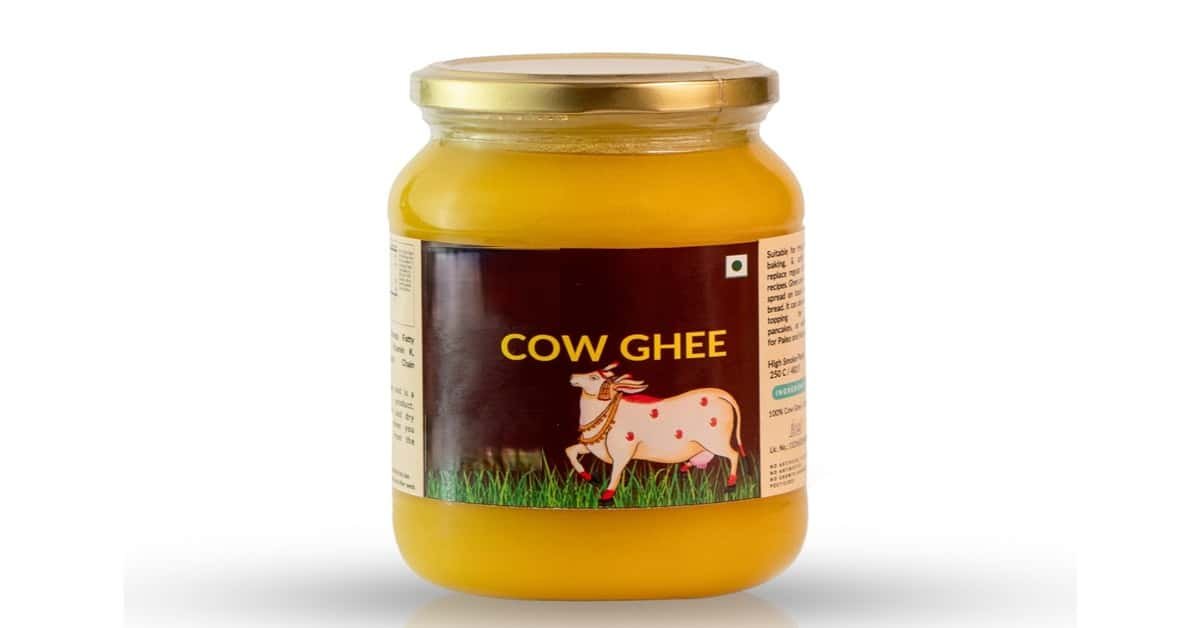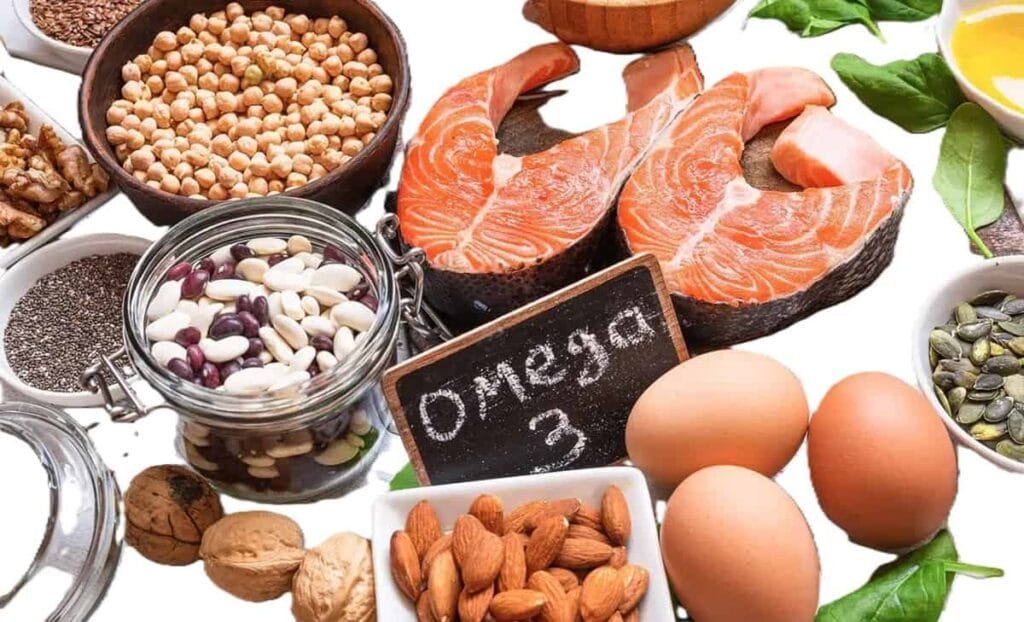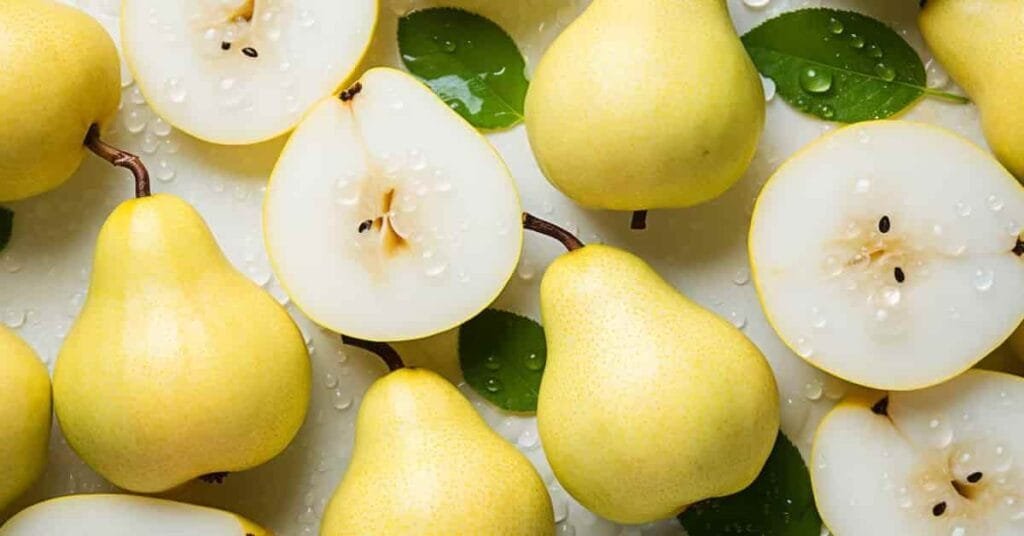Cow’s ghee is a type of clarified butter that is made by simmering cow’s milk butter to remove moisture, milk solids, and impurities, resulting in a rich, golden product with a distinct flavor and aroma. It has been widely used in Indian culinary traditions, Ayurvedic medicine, and various cultural practices. Here’s a comprehensive overview of cow’s ghee, covering its characteristics, preparation, health benefits, culinary uses, and storage.
Nutritional Information (per 1 tablespoon, approximately 14 grams)
- Calories: 120-135
- Total Fat: 14 g
- Saturated Fat: 9-10 g
- Monounsaturated Fat: 4-5 g
- Polyunsaturated Fat: 0.5-1 g
- Cholesterol: 30 mg
- Carbohydrates: 0 g
- Fiber: 0 g
- Sugars: 0 g
- Protein: 0 g
Breakdown of Nutrients
- Fats:
- Saturated Fats: Cow’s ghee is high in saturated fats, primarily consisting of short-chain and medium-chain fatty acids (such as butyric and capric acids), which can provide quick energy and may have beneficial effects on gut health.
- Monounsaturated and Polyunsaturated Fats: These fats can support heart health and provide essential fatty acids.
- Vitamins:
- Vitamin A: Supports vision, immune function, and skin health. Cow’s ghee is a significant source of retinol and provitamin A.
- Vitamin E: An antioxidant that helps protect cells from oxidative stress and supports skin health.
- Vitamin K: Important for blood clotting and bone health; it plays a crucial role in calcium metabolism.
- Minerals:
- Calcium: Though present in small amounts, ghee contributes to calcium intake and supports bone health.
- Phosphorus, Potassium, and Magnesium: Trace amounts may also be found, contributing to overall mineral intake.
Additional Components
- Butyrate: A short-chain fatty acid found in ghee that benefits gut health, reduces inflammation, and may help enhance metabolic health.
- CLA (Conjugated Linoleic Acid): Associated with various health benefits, including weight management and improved body composition.
Health Considerations
While cow’s ghee is nutrient-dense, it is important to consume it in moderation, especially for individuals who need to monitor their saturated fat intake due to heart health concerns. When included as part of a balanced diet, cow’s ghee can provide numerous health benefits.
List of best Cow’s Ghee
Finding high-quality cow’s ghee on Amazon requires careful consideration. Popular and well-reviewed options often include brands like “Organic Valley Purity Farms Ghee,” known for its USDA organic certification and grass-fed sourcing. “Ancient Organics Ghee” is another highly-rated choice, often praised for its rich flavor and traditional Ayurvedic preparation. Finally, “Pure Indian Foods Original Ghee” is frequently recommended for its grass-fed sourcing and rigorous third-party testing. Always check customer reviews and product details to ensure the ghee meets your specific dietary and quality preferences.
- SATVIK PURE GHEE A2 Gir Cow Ghee 1 Litre Churned From Vedic Bilona Method Bilona Ghee A2 Cow Desi Ghee 1 Litre,1.49 Kilograms
- Vedic Ghee Premium A2 Gir Cow Cultured Desi Ghee from Kesariya Farm | Vedic Bilona Two Way Churned | Indian Gir Cow Ghee, Pure A2 Ghee, Natural & Healthy, Non-GMO | Lab Certified (500ml)
- GirOrganic A2 Pure Ghee – 500 ml Glass Bottle | 100% Gir Cow Ghee | Vedic Bilona Method | Grassfed, Cultured, Premium & Traditional Ghee | Immunity Booster | Gopal Ratna Award Winner 2023
Characteristics of Cow’s Ghee
Cow’s ghee is a unique culinary ingredient with distinct characteristics that set it apart from other fats. Here are some key characteristics of cow’s ghee:
1. Color
- Golden Yellow Hue: Cow’s ghee typically has a rich golden yellow color, a result of the butterfat and natural carotenoids present in the cow’s milk.
2. Texture
- Smooth and Creamy: Fresh cow’s ghee has a smooth and creamy texture. It can be solid at room temperature but melts easily when heated.
3. Aroma
- Nutty Fragrance: When prepared, cow’s ghee emits a rich, nutty aroma, which enhances the sensory experience of dishes in which it’s used.
4. Flavor
- Rich and Robust: Ghee has a distinct and intense flavor that is buttery, slightly nutty, and creamy. It adds depth to both savory and sweet dishes.
5. High Smoke Point
- 450°F (232°C): Cow’s ghee has a high smoke point, making it ideal for frying, sautéing, and high-heat cooking without burning or producing harmful compounds.
6. Nutritional Composition
- Rich in Healthy Fats: Ghee is composed mainly of saturated and monounsaturated fats, along with short-chain fatty acids like butyrate, which are beneficial for health.
- Vitamins: Packed with fat-soluble vitamins A, D, E, and K, ghee supports various health functions.
7. Shelf Stability
- Long Shelf Life: Ghee is shelf-stable due to the removal of milk solids and water during the clarification process. When stored properly, it can last for months without refrigeration.
8. Lactose-Free
- Digestibility: Since ghee is clarified and contains no milk solids, it is generally lactose-free, making it suitable for those with lactose intolerance.
9. Culinary Versatility
- Adaptable Ingredient: Cow’s ghee can be used in various culinary applications, such as frying, baking, tempering spices, and as a finishing fat for dishes, enhancing flavors and textures.
10. Cultural Significance
- Traditional Use: Ghee holds a prominent place in many culinary traditions, particularly in India, where it is not only a cooking fat but also used in religious and ceremonial practices.
Preparation of Cow’s Ghee
Preparing cow’s ghee at home is a straightforward process that involves clarifying butter. Here’s a step-by-step guide on how to make cow’s ghee:
Ingredients
- Unsalted Cow’s Butter: Use high-quality, preferably organic, unsalted cow’s butter for the best flavor and quality.
Equipment Needed
- Heavy-bottomed saucepan or deep skillet
- Wooden spoon or spatula
- Fine mesh strainer or cheesecloth
- Glass or ceramic container for storage
Preparation Steps
1. Melting the Butter
- Cut the Butter: Take the desired amount of unsalted cow’s butter and cut it into smaller chunks for even melting. About 1 pound (454 grams) of butter is a good starting point.
- Heat: Place the butter in a heavy-bottomed saucepan over low to medium heat. Allow it to melt slowly without stirring at this stage.
2. Simmering
- Bubbling: Once melted, the butter will begin to bubble as the water content evaporates. This process is crucial, as the bubbling indicates that moisture is escaping.
- Milk Solids Separate: After several minutes, you will notice milk solids starting to sink to the bottom of the pan. Continue simmering the butter gently; the milk solids will turn golden brown and eventually settle completely.
3. Clarifying
- Color Change: As it cooks, the bubbling will slow down, and the ghee will take on a rich golden color. You will also notice a nutty aroma as the milk solids caramelize, which adds to the flavor.
- Cooking Time: This process typically takes about 20-30 minutes. Be attentive to avoid burning the solids at the bottom.
4. Straining the Ghee
- Check for Doneness: Once the bubbling has almost ceased and the ghee has turned golden, it’s ready to be strained.
- Strain: Remove the saucepan from the heat and let it cool slightly. Place a fine mesh strainer or cheesecloth over a clean glass or ceramic container. Carefully pour the ghee through the strainer to separate it from the milk solids.
5. Storing the Ghee
- Cool Down: Allow the strained ghee to cool to room temperature. It will solidify as it cools.
- Store: Once cooled, cover the container. Store ghee in a dark cabinet at room temperature for several months or in the refrigerator for an even longer shelf life (up to a year).
Tips
- Avoid Burning: Keep the heat low and monitor the ghee closely to prevent the milk solids from burning, which can impart a bitter flavor.
- Flavoring: You can enhance the flavor by adding herbs or spices like garlic, turmeric, or thyme during the simmering process, but remove them before straining.
- Understand Consistency: Ghee remains solid at room temperature but can easily be melted for use.
Health Benefits of Cow’s Ghee
Cow’s ghee, a clarified butter widely used in Indian cuisine and Ayurvedic medicine, is renowned for its various health benefits. Here’s an overview of its key health benefits:
1. Supports Digestive Health
- Butyrate Content: Ghee is rich in butyrate, a short-chain fatty acid that promotes gut health by nourishing the intestinal lining and reducing inflammation. It can also aid in digestion by stimulating the secretion of digestive acids.
2. Rich in Nutrients
- Vitamins and Antioxidants: Cow’s ghee is a good source of fat-soluble vitamins, including vitamins A, E, and K. These nutrients play vital roles in immune function, vision, skin health, and cell protection.
3. Anti-inflammatory Properties
- Reduces Inflammation: The butyrate and other fatty acids in ghee may help decrease inflammation in the body, which can benefit those with inflammatory conditions.
4. Promotes Heart Health
- Healthy Fats: While ghee is high in saturated fats, it contains heart-healthy monounsaturated fats that can help maintain healthy cholesterol levels when consumed in moderation. It may also improve the HDL (good cholesterol) levels.
5. Enhances Nutrient Absorption
- Aids in Assimilation: The presence of fat in ghee improves the absorption of fat-soluble vitamins and other nutrients from foods, making meals more nutritious.
6. Boosts Immune Function
- Antioxidant Properties: The antioxidants present in ghee may help strengthen the immune system by combating oxidative stress and supporting overall cellular health.
7. Promotes Healthy Skin
- Moisturizing Properties: Ghee can be applied topically for skincare, acting as a natural moisturizer and providing nourishment. It is also used in traditional remedies for dry skin and healing minor wounds.
8. Supports Weight Management
- Healthy Energy Source: As a source of healthy fats, ghee can provide sustained energy levels, thereby potentially supporting weight management when used in balanced diets.
9. May Enhance Brain Health
- Brain Function: The presence of fatty acids, particularly omega-3s and omega-6s in small amounts, can support cognitive function and brain health.
10. Lactose-Free
- Easier to Digest: Since ghee is clarified and contains no milk solids, it is generally lactose-free, making it a safer option for those with lactose intolerance.
Culinary Uses of Cow’s Ghee
Cow’s ghee is a versatile cooking fat that enhances the flavor and texture of various dishes. Here are some common culinary uses of cow’s ghee:
1. Cooking and Frying
- High Smoke Point: With a smoke point of around 450°F (232°C), ghee is ideal for frying and sautéing, allowing for high-heat cooking without burning.
- Deep Frying: Ghee can be used for deep frying traditional snacks and sweets, giving them a rich flavor.
2. Tempering Spices
- Tadka (Tempering): Ghee is commonly used to temper spices in Indian cuisine. Heating spices in ghee releases their essential oils and enhances the overall flavor of dishes like dals and curries.
3. Baking
- Substitute for Butter/Oil: Ghee can replace butter or oil in baking recipes, imparting a unique taste and richness to cakes, cookies, and other baked goods.
4. Flavor Enhancer
- Drizzling: Used as a finishing touch, ghee can be drizzled over dishes like roasted vegetables, grains, and soups to enhance flavor.
- Mixing: Blend with ingredients in marinades or salad dressings for added richness.
5. In Sauces and Gravies
- Base for Sauces: Ghee serves as an excellent base for rich sauces and gravies, adding depth and complexity.
- Creamy Curries: In many traditional Indian curries, ghee contributes to the creaminess and richness of the sauce.
6. In Traditional Dishes
- Sweets and Desserts: Ghee is a key ingredient in many Indian sweets, such as laddus, halwa, and barfis, where it adds flavor and moisture.
- Roti and Paratha: Spread ghee on freshly cooked roti or paratha for additional taste and nutritional benefits.
7. Flavoring Rice and Pulses
- Tempered Rice: Ghee can be used to temper rice dishes such as pulao or biryani, infusing them with a rich flavor.
- Cooking Lentils: Adding ghee to lentil dishes enhances flavor and improves digestibility.
8. Enhancing Grains
- Oatmeal and Porridge: Swirling ghee into oatmeal or porridge provides creaminess and a nutty flavor.
- Quinoa or couscous: Mixing ghee into grains like quinoa or couscous adds richness and improves the overall taste.
9. In Beverages
- Golden Milk: Ghee can be incorporated into traditional beverages like “golden milk” (turmeric milk), which is praised for its health benefits.
10. Spreads and Sauces
- Garlic Ghee: Make flavored ghee by infusing it with herbs, garlic, or spices to use in spreads or as a dipping sauce for bread.
Storage of Cow’s Ghee
Proper storage of cow’s ghee is essential to maintain its quality, flavor, and nutritional properties. Here are some guidelines on how to store cow’s ghee effectively:
1. Choosing the Right Container
- Airtight Container: Use a clean, airtight glass or ceramic jar to prevent moisture and contaminants from entering. Avoid plastic containers, as they may absorb flavors and odors.
- Avoid Metal Containers: While some metals are safe, it’s best to stick with glass or ceramic to prevent any potential reaction that could affect the taste.
2. Storage Conditions
- Room Temperature: Cow’s ghee is shelf-stable and can be stored at room temperature for several months if kept in a cool, dark place away from direct sunlight and heat sources. Ensure the lid is tightly sealed when not in use.
- Refrigeration: While not necessary, you can refrigerate ghee to extend its shelf life. It will solidify in the fridge but can be easily scooped and melted when needed. If refrigerated, ghee can last for up to a year or more.
3. Avoiding Contamination
- Use a Clean Spoon: Always use a clean, dry spoon to scoop out ghee to prevent introducing moisture or contaminants.
- Keep Away from Moisture: Avoid exposing ghee to water or steam, as moisture can lead to spoilage or rancidity.
4. Signs of Spoilage
- Smell: Fresh ghee has a rich, nutty aroma. If it develops a sour or off smell, it’s likely spoiled.
- Color and Texture: Ghee should be a golden yellow color. If you notice any discoloration or mold, discard it immediately.
- Taste: If the flavor becomes odd or rancid, it’s best to throw it out.
5. Usage Tips
- Small Quantities: Consider transferring a small amount of ghee for daily use, keeping the larger supply sealed to maintain freshness.
- Freezing: For long-term storage, you can freeze ghee in ice cube trays. Once frozen, transfer the cubes to a freezer-proof bag. Frozen ghee can last for up to a year.
FAQs based on Cow’s Ghee
Here are some frequently asked questions (FAQs) about cow’s ghee, along with concise answers:
1. What is cow’s ghee?
Cow’s ghee is clarified butter made from cow’s milk. It involves simmering butter to remove water content and milk solids, resulting in a rich cooking fat with a distinct flavor.
2. What are the health benefits of cow’s ghee?
Cow’s ghee offers various health benefits, including improved digestion, anti-inflammatory properties, high nutrient content (vitamins A, E, K), and support for heart health when consumed in moderation.
3. How do I make cow’s ghee at home?
To make cow’s ghee, melt unsalted cow’s butter in a saucepan over low heat until it simmers. Cook until the milk solids settle at the bottom and turn golden, then strain the liquid into a container, leaving the solids behind.
4. Can cow’s ghee be used for cooking at high temperatures?
Yes, cow’s ghee has a high smoke point of around 450°F (232°C), making it suitable for frying, sautéing, and other high-temperature cooking methods without burning.
5. How should cow’s ghee be stored?
Store cow’s ghee in an airtight glass or ceramic container in a cool, dark place. It can also be refrigerated or frozen for extended shelf life.
6. Does cow’s ghee contain lactose?
Ghee is generally lactose-free, as the clarification process removes milk solids that contain lactose, making it easier to digest for those with lactose intolerance.
7. What is the difference between butter and ghee?
Butter typically contains milk solids and water, while ghee is clarified, meaning these components are removed. This gives ghee a higher smoke point and a longer shelf life.
8. Can ghee go bad? How can I tell?
Ghee can spoil, though it has a long shelf life. Signs of spoilage include a sour smell, discoloration, or off taste. Always store it properly to prolong freshness.
9. Is cow’s ghee suitable for people with dietary restrictions?
Ghee is often considered suitable for paleo and keto diets due to its high fat content and absence of carbohydrates. Always consult a healthcare provider for specific dietary needs.
10. What dishes can I use cow’s ghee in?
Cow’s ghee can be used in various dishes, including curries, rice, baked goods, sautés, and as a drizzle over vegetables or grains. It’s also great for flavoring sweets and desserts.
Conclusion
Cow’s ghee is a versatile and nutritious fat that enhances culinary creations and offers a range of health benefits. Its rich flavor and various applications make it a staple in many kitchens, especially in Indian and Ayurvedic cooking.


